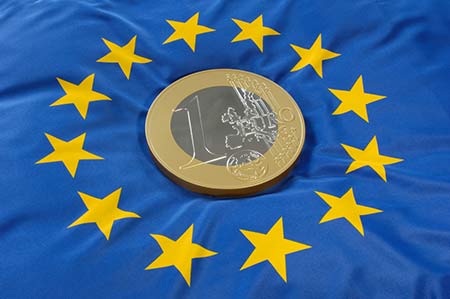Yesterday’s PMI and consumer confidence reports for the Eurozone might have fallen short of forecasts, but the common currency continued trading higher against the Australian Dollar.
The appeal of the commodity-driven ‘Aussie’ rapidly declined on Thursday as China’s manufacturing sector was shown to have contracted by more than expected. The currency consolidated and extended losses overnight as industry experts at Deutsche Bank AG predicted that the ‘Aussie’ will depreciate by more than 20 per cent over the next two years.
In the opinion of chief economist Adam Boyton; ‘We can envisage, based on our central forecasts as a house, a decline in the AUD to the mid 60s over the next 2-years without either a domestic or offshore crisis. US 10-year bond yields close to Australian yields could mean an AUD/USD rate in the mid 60s.’
The Australian Dollar was also adversely affected by the news that iron ore prices dropped.
Iron ore is Australia’s biggest export, so the 1.2 per cent dip in prices over the past two days wore on the currency.
As well as weakening against the Euro the ‘Aussie’ was heading for its first five-day decline against the US Dollar for four-weeks.
A lack of influential news for the Eurozone may limit movement in the EUR/AUD pairing before the weekend.
Yesterday the Euro was only modestly affected by the news that the French services and manufacturing sectors contracted by more than expected in February, although the common currency did slip against the Pound and US Dollar.
The Eurozone’s composite PMI also came in a point below the expected 54 level and consumer confidence in the 18 nation currency bloc unexpectedly fell to -12.7.
Next week is fairly data heavy, but Australia’s reports, including construction work figures, private capital expenditure and a private sector credit, are unlikely to inspire much volatility.
Movement in the EUR/AUD pairing is more likely to be inspired by China’s property price figures, German business climate indexes, Eurozone inflation figures, China’s conference board leading economic index, final GDP data for Germany, the German consumer confidence survey and Eurozone consumer confidence reports.
Euro (EUR) Exchange Rates
[table width=”100%” colwidth=”50|50|50|50|50″ colalign=”left|left|left|left|left”]
Currency, ,Currency,Rate ,
Euro, ,US Dollar,1.3704
,US Dollar,1.3704
Euro, ,British Pound,0.8220,
,British Pound,0.8220,
Euro, ,Australian Dollar,1.5232,
,Australian Dollar,1.5232,
Euro, ,New Zealand Dollar,1.6520,
,New Zealand Dollar,1.6520,
Euro, ,Canadian Dollar,1.5273,
,Canadian Dollar,1.5273,
[/table]



